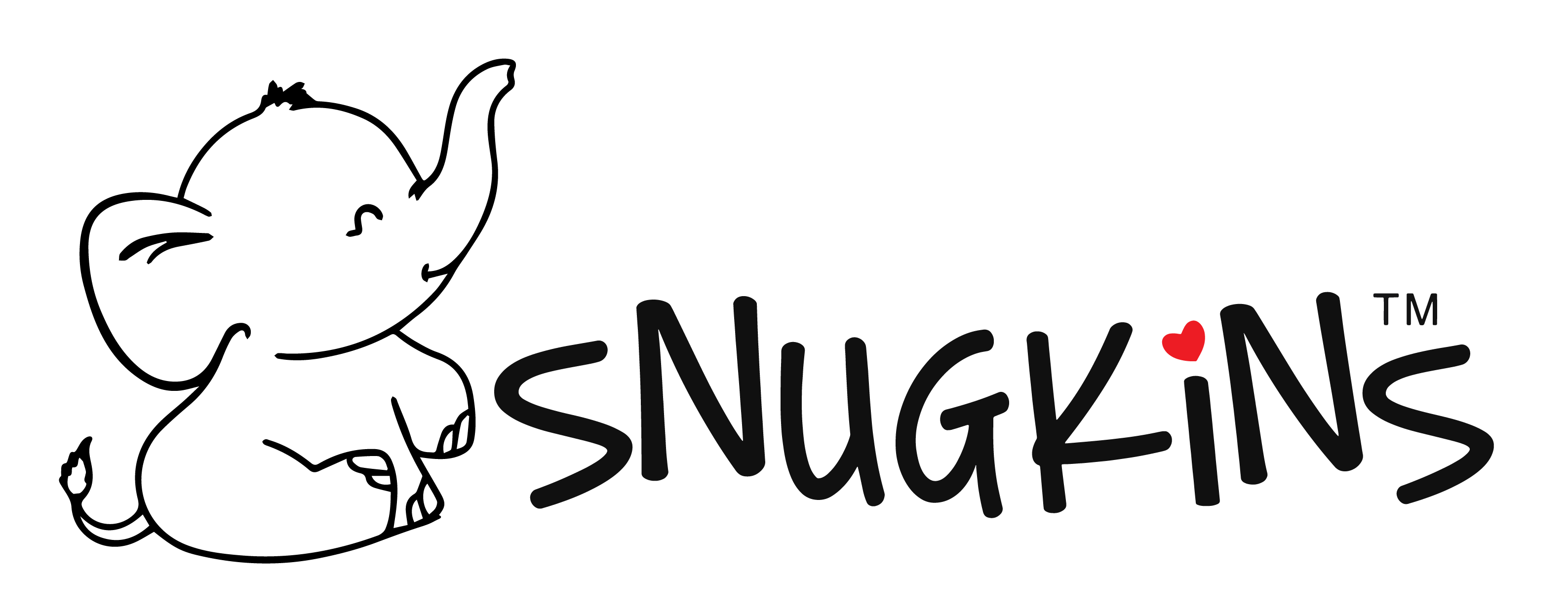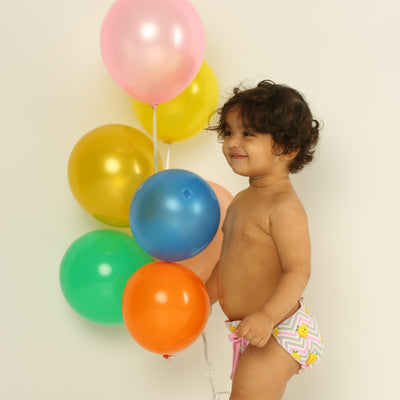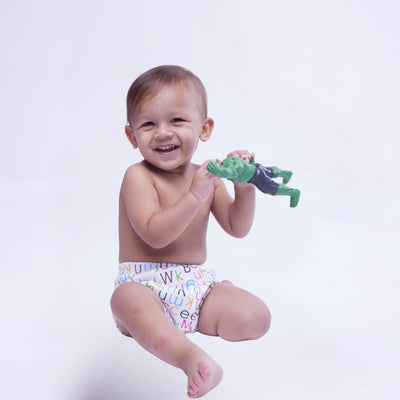Potty Training for Boys vs Girls: What’s the Difference?

Potty training is a crucial part of a child’s progress toward self-care and independence. For many parents, the process raises a common question: Is potty training for boys different from potty training for girls? The short answer is yes. While the basic goal is the same - teaching your child to use the toilet independently - there are subtle differences in readiness, approach, and timeline between boys and girls.
Understanding these differences can help parents plan more effectively and choose the right tools, such as potty training pants, padded underwear, and suitable potty training techniques that cater to their child's needs. Let's break down the key contrasts and how you can make this transition smoother for your child
Potty Training Readiness: Boys vs Girls
Most pediatricians agree that girls tend to show signs of potty training readiness earlier than boys. On average, girls may begin training around 18–24 months, while boys might be ready closer to 22–30 months. This difference isn’t about intelligence but rather physiological and developmental timelines.
Signs of readiness include:
-
Staying dry for two hours or more
-
Showing interest in the bathroom habits of others
-
Communicating the need to go
-
Discomfort with dirty diapers
No matter your child’s gender, it's important not to rush this stage. Forcing potty training before your child is ready can lead to resistance and setbacks.
Physical Differences: Why They Matter
One of the main reasons potty training for boys can take slightly longer is due to anatomy. Boys must first learn to sit and then transition to standing for urination, which can be a two-step learning curve. On the other hand, girls usually learn to sit from the beginning, simplifying the process.
Parents of boys may want to start with sitting and later introduce standing, especially for public restrooms where cleanliness is a concern. Using training pants potty from Snugkins can make this transition easier by giving your child the confidence and comfort they need while learning both methods.
Emotional & Behavioral Differences
Girls often show a bit more interest in mimicking adult behaviour and may be more open to instruction, which can speed up training. Boys, however, might be more playful or distracted, requiring more creative approaches, like games or rewards, to stay focused during training.
Regardless of gender, creating a supportive and stress-free environment is key. Celebrate progress, stay patient, and never punish accidents. Use supportive language to reassure that setbacks are expected and part of the process.
Choosing the Right Tools for Potty Training
The right tools can make a big difference in how smooth and stress-free potty training turns out to be. While every child’s needs are unique, some essentials can support comfort, consistency, and confidence throughout the process. The goal is to help your child transition out of diapers while giving them the freedom to learn at their own pace.
1. Training Pants That Support Learning
When your child starts potty training, they're not instantly ready for regular underwear. That’s where potty training pants come in. These are designed to be absorbent enough to handle small accidents but thin enough for your child to feel when they're wet. This sensation is key to helping them understand bladder control.
Training pants should be easy to pull up and down, breathable, and gentle on the skin. Look for soft fabrics and snug fits that encourage independent use. Options like Snugkins potty training pants offer reusable, eco-conscious alternatives to disposable pull-ups -ideal for both day and early-stage night training.
2. Consider Padded Underwear for Extra Confidence
For children who are just beginning or need more reassurance, padded underwear can be a great bridge between diapers and regular underwear. It provides a bit more protection than training pants without the bulk, helping children stay dry while still learning from the occasional accident.
This type of underwear is especially helpful during outings or nap time when small accidents are more likely. Snugkins padded underwear offers comfort and coverage without compromising on the “big kid” feeling that motivates many toddlers.
3. Clothing That Encourages Independence
Beyond underwear, clothing plays an essential role. Choose bottoms with elastic waistbands - avoid buttons, zippers, or anything that might slow them down in the bathroom. When you’re practicing potty training with pants, make sure your child can pull them down quickly and without help. This also teaches valuable self-care skills and boosts confidence.
Keep this in mind, especially during the day, when quick trips to the potty are frequent. Pairing easy-on clothing with training pants potty options can make a noticeable difference in success rates.
4. Child-Friendly Bathroom Setup
In addition to what your child wears, make sure the bathroom is set up for ease. A child-sized potty or seat reducer can make them feel secure. A step stool helps them reach the toilet and sink without fear. All these elements create an environment that encourages routine and self-reliance.
Tips for Potty Training Boys
1. Avoid Overcomplicating the Process
Many parents assume boys must be taught to stand from the start, but that can slow things down. Begin with sitting. It helps your child focus on the act of using the toilet without juggling balance, aiming, or distractions. Standing can come later, once he's confident and consistent.
2. Make It Fun but Focused
Attention span can be a hurdle. Turn potty time into a short, focused routine instead of a drawn-out process. Avoid screens, but simple tricks like using a sticker chart or favorite book reserved only for potty time can keep things on track.
3. Use Target Practice to Teach Control
Once your child is ready to stand, introduce basic aim using target practice. Drop a piece of cereal into the toilet and let them try to hit it. This improves control in a fun, low-pressure way. Avoid overusing this technique - keep it occasional so it stays effective.
4. Selecting Training Pants and Underwear That Work
Wearing the right clothes during potty training makes a big difference. Choose Snugkins potty training pants or padded underwear that are easy to pull down quickly and provide light protection for accidents. They create a balance between comfort, confidence, and cleanliness, which is essential for boys who may get distracted or wait too long.
5. Don’t Skip the Basics
Make sure they know all the steps - wiping properly (even after peeing), flushing, and washing hands. Boys often want to rush out, so reinforcing the full routine consistently matters more than how fast they master aiming.
Tips for Potty Training Girls
1. Teach Clean Habits from the Start
Help her learn to wipe front to back every time she uses the toilet. This simple but essential habit helps reduce the risk of urinary tract infections. Use gentle reminders and model the habit through play or stories to make it easy to understand.
2. Encourage Independence with Clothing
Potty training isn’t just about the toilet - it’s about self-care. Teach her how to pull her pants and underwear down and back up on her own. Choose easy-to-manage bottoms with elastic waistbands, and use Snugkins potty training pants or padded underwear, which are designed to slide on and off easily. Practicing this gives her more confidence to go without needing help every time.
3. Support Her Need for Privacy
As girls become more aware of their bodies, many begin to want privacy while using the bathroom. Respect this by knocking before entering and letting her close the door if she asks. These small habits help her understand personal boundaries and create a healthy comfort level with her body.
4. Let Her Choose Her Training Gear
Give her a sense of ownership by letting her pick her favorite padded underwear or training pants potty styles. Snugkins offers fun, colorful options made from skin-safe, breathable fabric, so she feels comfortable and proud to wear them.
5. Make Bathroom Access Easy
Use a small step stool to help her climb onto the toilet safely and reach the sink afterwards. Consider setting up her own small towel and soap to make handwashing part of her potty routine, not an afterthought.
Final Thoughts
Potty training isn’t a one-size-fits-all journey. Boys and girls may approach it differently, but what truly matters is tuning into your child’s pace, offering encouragement, and staying consistent. There will be setbacks, progress, and surprises - but with a calm, supportive approach, your child will gain the confidence to take this big step toward independence.
The right tools can make a big difference. Thoughtfully designed essentials like potty training pants, padded underwear, and other soft, skin-friendly options from Snugkins are made to support both parents and children through the transition - comfortably, sustainably, and without stress.
Remember, potty training is gradual. Patience and positivity go a long way, so be sure to celebrate the little successes.















